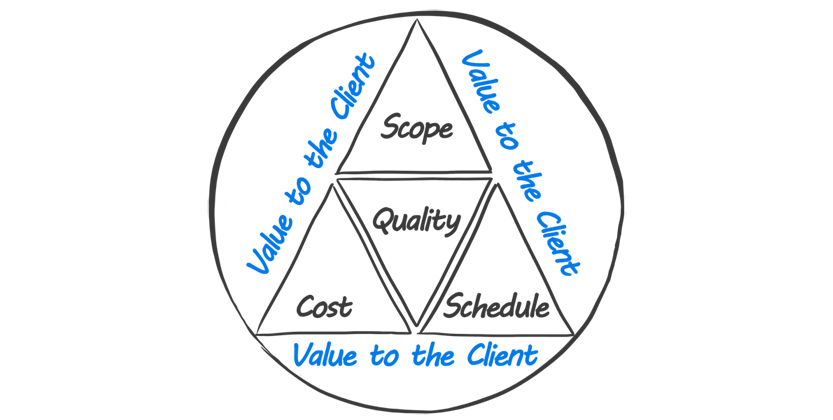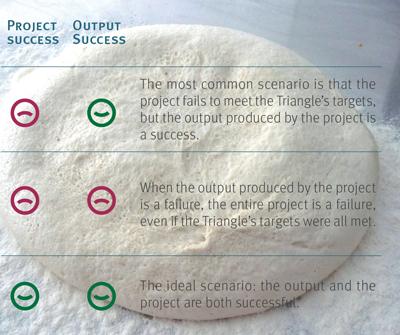
A successful project is defined as a project that meets its goals, and whose output is of value to the client. It seems, then, that the success or failure of any given project is primarily a function of its goals. Therefore, a clear definition of those goals and an objective way to measure whether or not these goals have been met are crucial for measuring the success of the project.
The sad reality is that, statistically speaking, the vast majority of projects—regardless of the field of expertise—fail to meet their content, time and budget targets, and are therefore failures. However, in order to understand what this failure means, it is important to distinguish between the project and its output.
The most common scenario is that the project fails to meet the objectives set out in the Triangle (scope, time, and cost), but that the output itself is successful, so we forgive ourselves since “the bottom line is”, or “at the end of the day”, or “when put to the test”, we achieved the value we set out to achieve. The question is did we achieve the value through a good investment of resources or would it have been better to invest these resources in a different project that might have yielded a higher value?

Ask any Australian whether the Opera House in Sydney is a national treasure and a great success, and chances are he will tell you it is. As a project that came in at many hundreds of times above the allotted budget and far behind the originally planned schedule, can this project be considered a success? The answer is yes. The most common scenario is that the product or the service succeeded, while “only” the project failed. However, the opposite can never be true. It is not possible for a project to succeed—even if it did not deviate from any of its goals—while the resulting product or service fails. This is simply because the primary test of whether a project is a success is whether the output produces value for the client. An output that does not provide any value is nothing less than money thrown away, regardless of our level of responsibility for this state of affairs. So, was the project a success or a failure? The answer, of course, is that the project was a failure. While it is certainly important to meet all of a given project’s targets, the true measure of success is the value of the product or service for the client.
It is possible to represent the value for the client as a ratio between the cost of the project and the output’s usefulness (Usefulness/Cost), so that if the usefulness is zero, the cost can be any number at all—from small to infinitely big—and the value for the client will remain zero (0/x=0).
It is imperative that we not only pass the output test but also succeed with our investment in the project whose goal it was to produce that output. Therefore, we must ensure that the project goals are clear, achievable, and agreed upon; that we have the necessary commitment from all project stakeholders; that we have all the resources necessary to execute the project; and that the project manager is the right person for the job.


